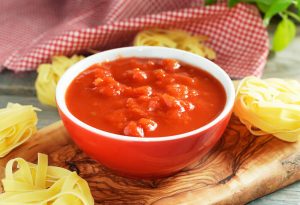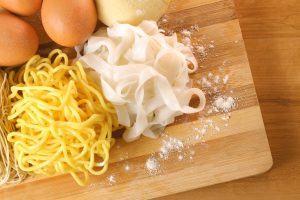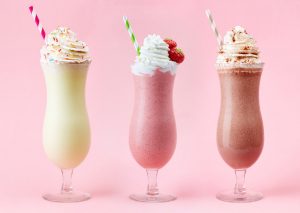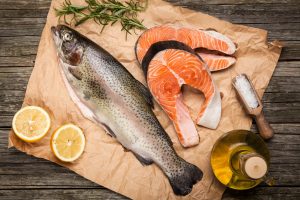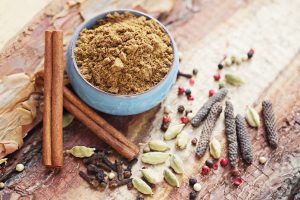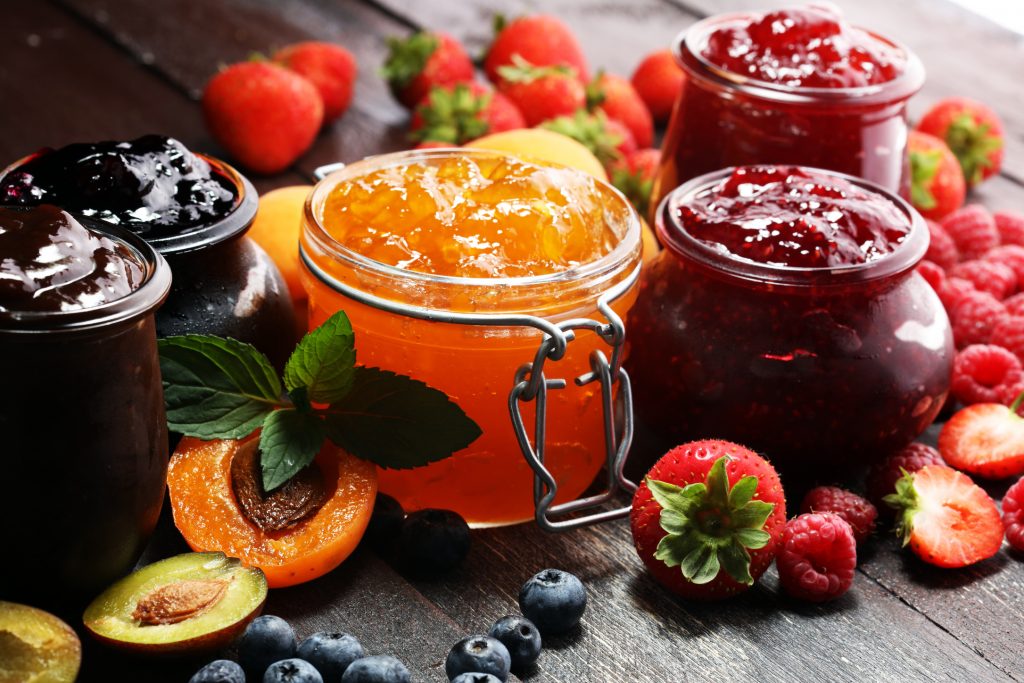
Jam and jelly: these two sweet delectables have always been a staple part of breakfast. Pair them with waffles or pancakes, or make a classic peanut butter and jelly sandwich. Either way, jam and jelly can help you put together some sweet breakfast ideas to start your day right!
Now, both are yummy and sweet, but they’re not the same. The key difference between jam vs jelly? The amount of fruit used in each! Read on to find out how they are different.
What Is the Difference Between Jam vs Jelly?
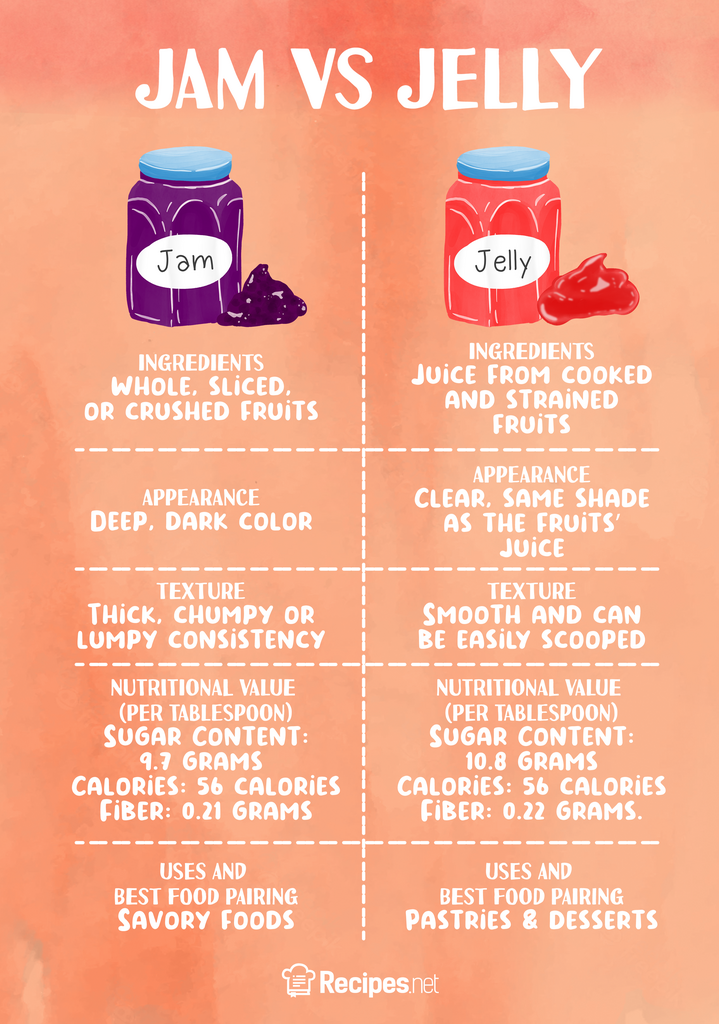
The main difference between jam and jelly is in the amount of fruit used in each one. Jam is made of all edible parts of fruit, while jelly only uses fruit juice.
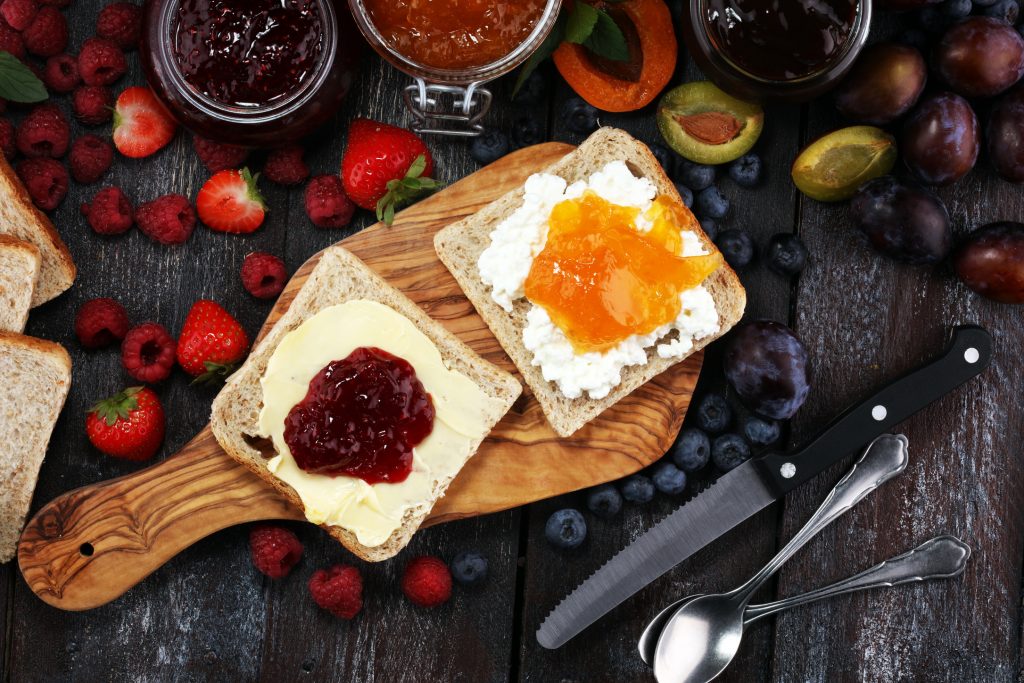
We may know jam as a sweet condiment, but did you know that it is a type of fruit preservation method? The fruit bits that we taste in jams are made with crushed fruits cooked in sugar and acid to lengthen the shelf life of the fruits. Typically, we’d see an array of single-flavored jams at the grocery store with strawberry jams taking the lead as America’s favorite type of jam. That said, there are other types of jams that combine different fruit pairings. If you’re looking for a more complex flavor profile, then this apple pear jam might just be right up your alley.
Jelly, on the other hand, is made from strained fruit juice and has a gel-like translucent consistency. And like jam, jelly is also a fruit preserve. The most common type of jelly you’d find is grape jelly, though pear, apricot, and raspberry are also some Americans’ favorites. But a true gourmet would know that this grape jelly and cream cheese dip on sourdough hits the same spot as your PB&J.
Knowing the main difference between jam and jelly is important as it affects the appearance and texture as well as the making process of the two. So here’s a breakdown of all the differences that set jam and jelly apart to help you further understand their differences:
Appearance and Texture
Jam has a darker color and thicker consistency than jelly. You can also actually see specs or lumps of fruits in this mixture. It is smooth but sticky and definitely chunky, especially if the fruits added are only cut into smaller pieces. You’d notice this texture in most store-bought jams. But for a fresher taste, learn how to make jam with this strawberry jam recipe.
On the other hand, jelly has a transparent color and smoother texture. So if you are wondering which spreads easier, the answer is jelly! It has no lumps, so it easily glides on your bread.
Jam and Jelly-Making Process
Both jam and jelly contain sugar, acid, and pectin aside from the fruit used. All of these ingredients serve a specific purpose. Sugar is the reason behind jam and jelly’s sweet flavor and sticky texture. Pectin is what makes everything in your jam and jelly gel together, giving them a spreadable consistency. Acid, like lemon and lime, is the one that activates the pectin.
And since jam uses sliced or crushed whole fruit, jam makers may opt not to add as much sugar and pectin as these ingredients are already found in the fruit’s flesh. There are times when other homemade jams do not contain these at all. In contrast, jelly is from strained fruit juice which is why jelly has more pectin and sugar to solidify and give it its gelatinous texture.
- For longer shelf life, jam and jelly makers use the water bath canning method — where they boil sealed jars filled with jams and jellies to kill bacteria. This process is only used for food with high acidity.
Uses of Jam vs Jelly

Jam and jelly can be used interchangeably. But since jam has a more potent fruity flavor, we recommended pairing it with savory foods like Swedish meatballs. You can add it to the selection of cheese and salami on your charcuterie board, use it as a glaze for your barbeque, and even as a surprise twist in your grilled cheese sandwich.
Jelly, on the other hand, goes well with different pastries and delectable desserts like cream cheese and jelly turnovers, because of its easy-to-spread texture. Also, its underlying fruity acidity balances the overall sweetness of these sweet treats.
Jelly vs Jam: Which Is Healthier?

Fruit jams, especially homemade ones where the sugar content can be controlled, are healthier compared to jellies. Commercially speaking, sugar in jam is around 9.7 grams per tablespoon while jelly has 10.8 grams.
Jam also uses most parts of the fruit, retaining other vitamins and minerals from it, compared to the fruit juice ingredient of jellies. However, the difference in their caloric count is not that big. Most commercially bought jam and jelly calories are the same — with 56 calories per tablespoon. However, we suggest avoiding these sweet temptations if you are with a medical condition like diabetes or if you are targeting to lose weight.
How to Store Jam and Jelly
Do jam and jelly go bad? Yes, they do. In every food preservation process, the enemy is bacteria. That is why proper handling and storage are important. Both storebought jam and jelly (unopened) may last for six months to a year. Other varieties of jellies may even last up to two years. Just remember to store them in a cool and dry place, away from direct sunlight. Opened jams and jellies can last up to a month in the refrigerator.
Do you have to refrigerate jelly and jam? Yes, you can, though you don’t have to. You may even place your sealed jars in your freezer. If you have homemade ones, we recommend refrigerating them, as they do not have additives and other preservatives.
Jelly vs Jam vs Other Fruit Preserves
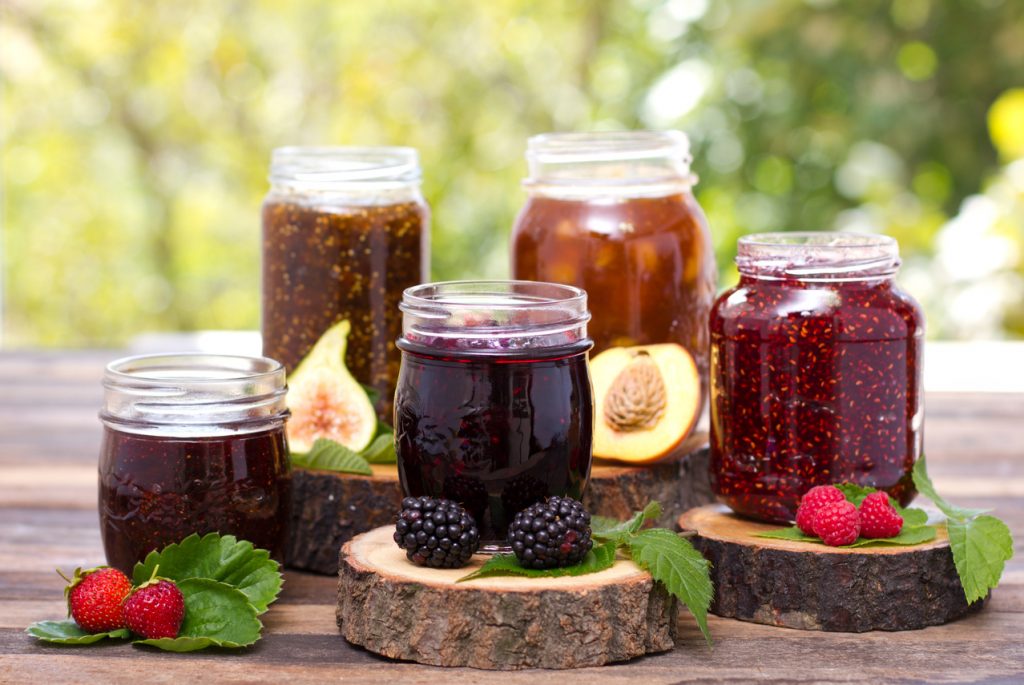
So, what’s the difference between jam, jelly, and fruit preserves? Jam and jelly are types of fruit preserves. Fruit preserves pertain to the process of lengthening the shelf life of produce through sugar and acid. These main ingredients give them a generally sweet, tarty flavor that you can easily pair with any dish and even add when making your charcuterie board. But aside from jam and jelly, there are other common fruit preserves that you may see in the market.
Marmalade
First is marmalade. What is marmalade? Well, it is also a type of fruit preserve. However, the difference between jelly and jam vs marmalade is that the latter is mainly made of fruit juice with citrus peel, giving it a sweet, tarty, and bitter finish. One great example is this sweet and acidic lemon marmalade that goes well with your morning toast.
Fruit Butter
Another type of fruit preserve is fruit butter. It is from cooked fruit that has a paste-like consistency. It has a very natural flavor and is less sweet compared to other preserves. You can try concocting your own by following this easy fruit butter recipe.
Compote
Compote is from whole parts or sliced pieces of fruits soaked in sugar syrup. You can create a compote using a singular type of fruit or you can try this fresh fruit compote using a selection of your favorite fruits and berries.
Curd
Finally, there’s curd, a dessert spread made from highly acidic fruit juices, sugar, and eggs, usually used as a dessert topping or a pie filling like in this cranberry curd tart.
Which Is Better, Jam or Jelly?
At the end of the day, there is no final verdict about which one is better. Yet, choosing between the two doesn’t have to be a conundrum. Yes, they are alike but they’re also not the same. The question is: which do you prefer? Jam with a thicker consistency with strong fruity flavors, or jelly with a lighter and smoother texture? Well if you still can’t choose, get them both and explore the culinary possibilities that you can do with these delicious spreads!
Was this page helpful?
Read Next: Zucchini vs Cucumber: Differences Explained!

